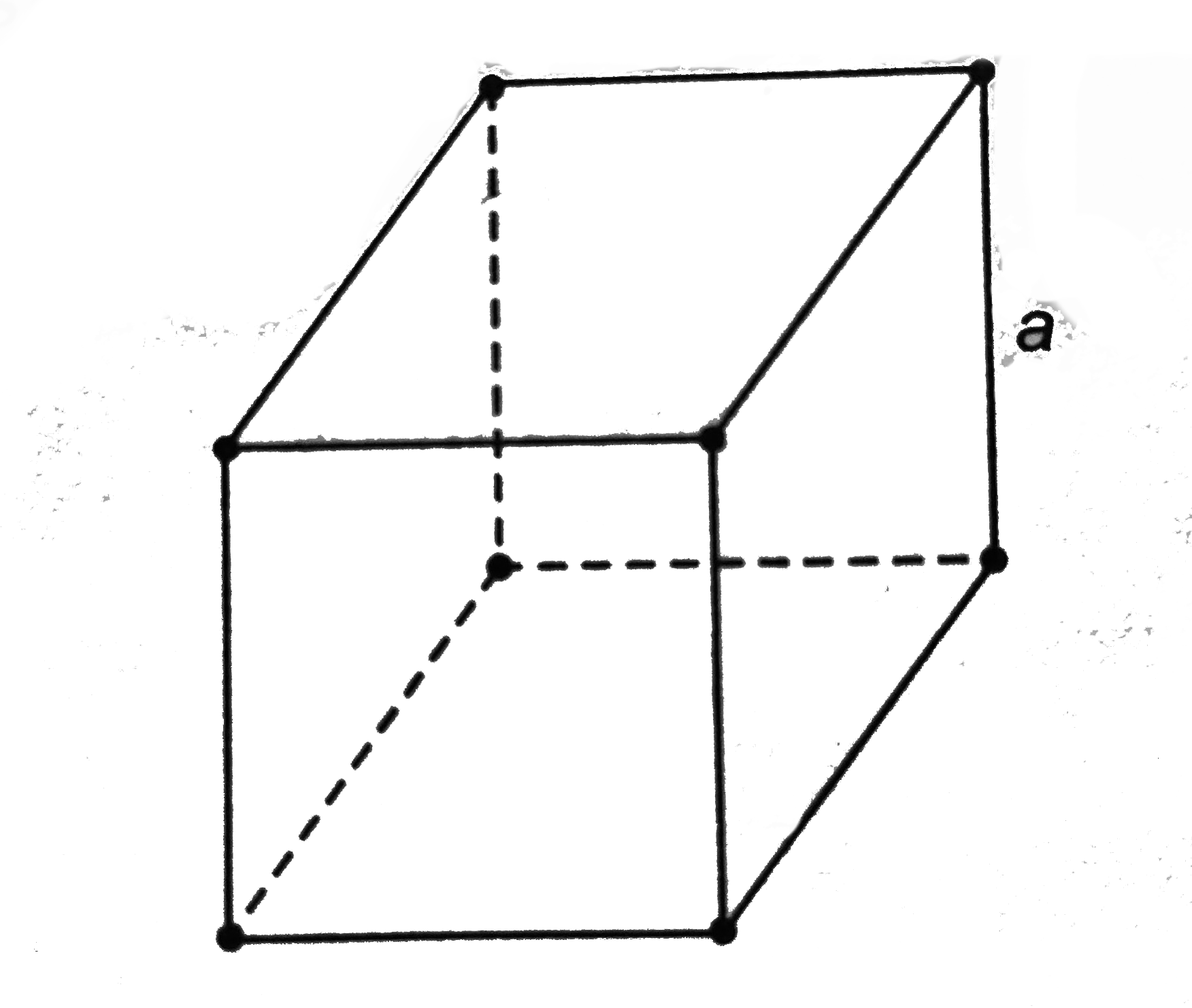Find the gravitational potential energy of a system of four particles, each of mass m placed at the verticles of a square of side l. Also obtain the gravitaitonal potential at centre of the square.

Consider four masses each of mass m at the corners of a square of side l: See Fig. ,9. We have four mass paris at distance l and two diagonal pairs at distance √2l
Hence,
W®=−4Gm2l−2Gm2√2l

=−2Gm2l(2+1√2)=−5.41Gm2l
The gravitational potential at the centre of the square (r=√2l/2) is
U(r)=−4√2Gml
Topper's Solved these Questions
Similar Questions
Find the potential energy of a system of four particles each of mass 2m kept at the vertices of a square of side x. Also find the potential at the centr of the square.
View SolutionThe gravitational potential energy of a system of three particles of mass m each kept at the vertices of equilateral triangle of side x will be
View Solution
Knowledge Check
Four particles each of mass m are placed at the vertices of a square of side l. the potential at the centre of square is
A−√2Gm2l(2−1√2)B−2Gm2l(2+1√2)C−√2Gm2l(√2−1√2)D−2Gm2l(√2−1√2)
Four particles each of mass m are kept at the four vertices of a square of side 'a' . Find gravitational potential energy of this system.
View SolutionFind the potential energy of 4-particles, each of mass 1 kg placed at the four vertices of a square of side length 1 m.
View SolutionThe gravitational potential energy of an isolated system of three particles, each of mass m, at the three corners of an equilateral triangle of side l is
View SolutionEight particles of mass 'm' each are placed at the verties of a cube of side 'a' . Find gravitational potential energy of this system .
 .
.
View SolutionFind the potential energy of a system of eight particles of mass M placed at the vertices of a cube of side L. neglect the self energy of the particles.
View SolutionFind the potential energy of a system of 3 particles kept at the vertices of an equilateral triangle of side r.
View SolutionFour particles each of mass 'm' are placed at the four vertices of a square 'a' .Find net force on any one the particle.
View Solution
